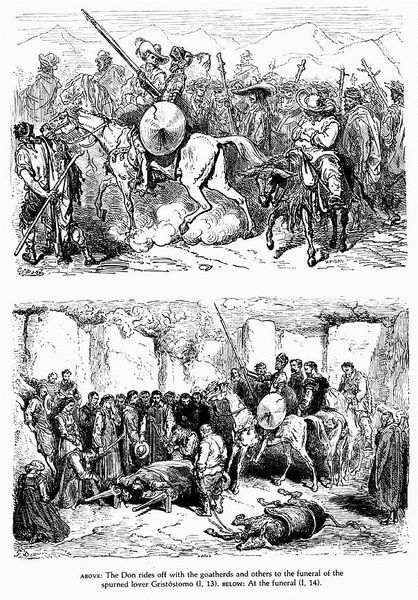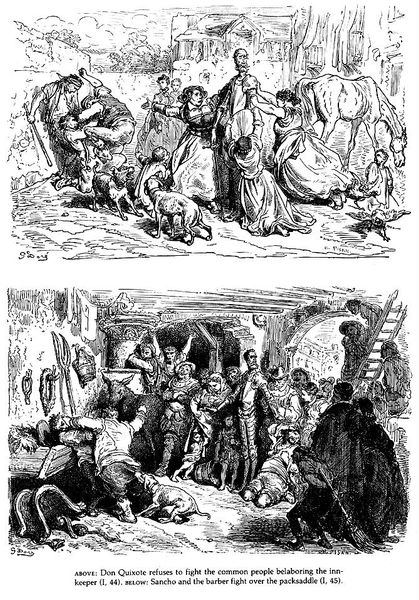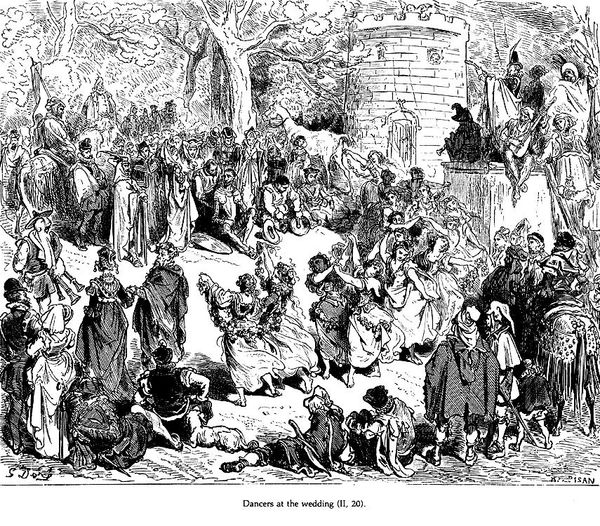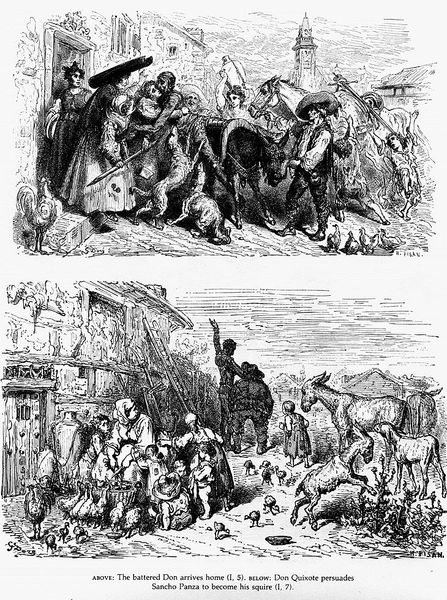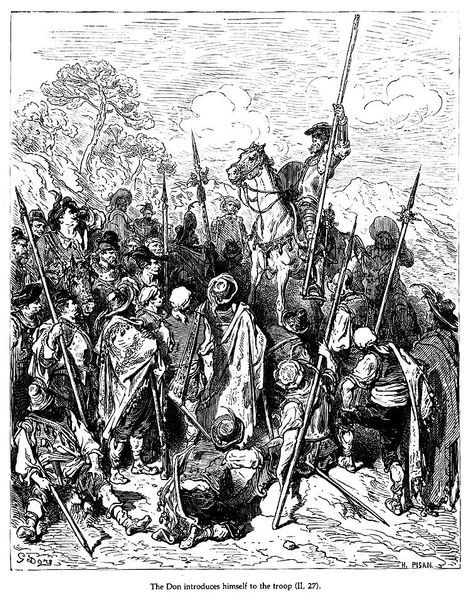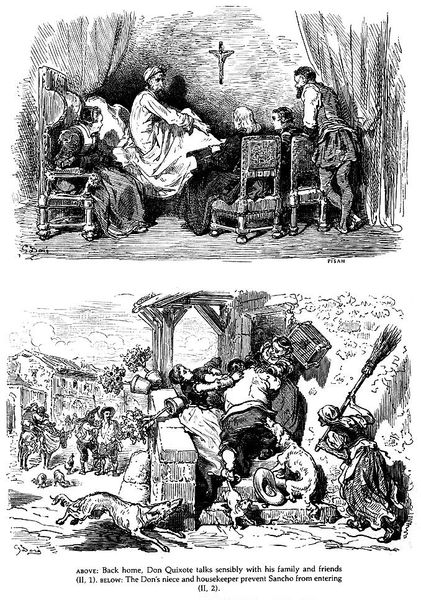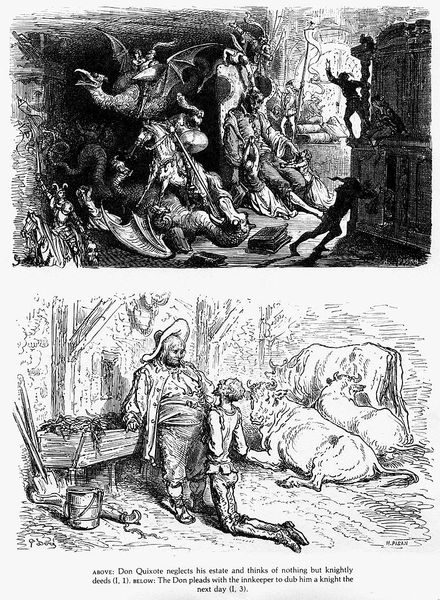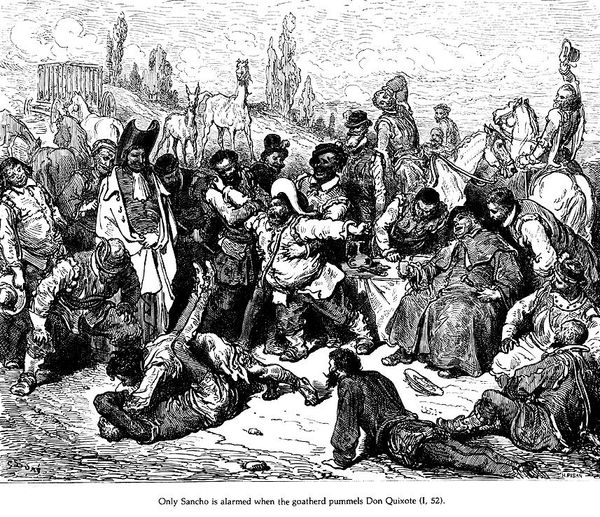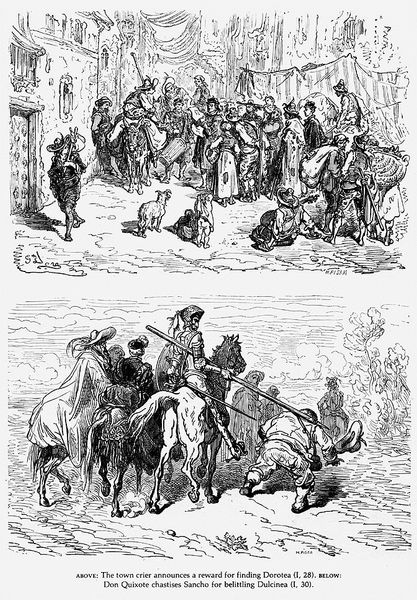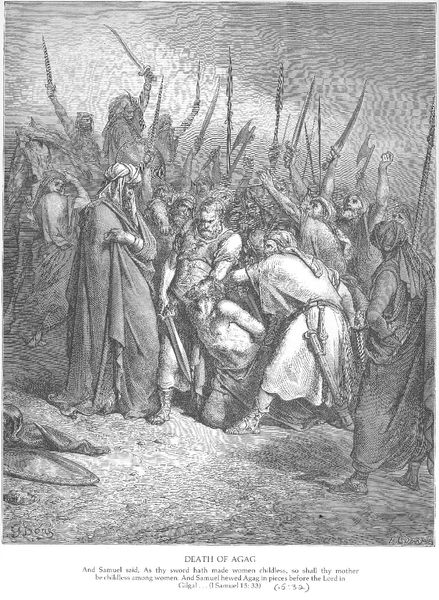
drawing, print, ink, engraving
#
drawing
#
narrative-art
# print
#
figuration
#
ink
#
romanticism
#
engraving
Copyright: Public domain
Gustave Doré made this illustration for Cervantes' "Don Quixote" in 19th-century France. It offers us a glimpse into the cultural fascination with the romantic, yet often misguided, heroism embodied by Don Quixote. The image creates meaning through a distinct visual language. The upper scene depicts the chaotic brawling at the inn. The lower scene shows Don Quixote carried to his cage. Doré uses a stark contrast between light and shadow to heighten the drama of both scenes, drawing the viewer's eye to the central figures in each. France in the 1800s was a society grappling with rapid social and political change following the French Revolution. The figure of Don Quixote, tilting at windmills, resonated with a culture questioning established norms and institutions. Doré's illustrations, widely circulated through print media, helped to shape and solidify the cultural understanding of Cervantes' novel. Art historians often look at the social and political context, using resources like period publications, literature, and social commentaries, to fully appreciate its cultural impact.
Comments
No comments
Be the first to comment and join the conversation on the ultimate creative platform.
